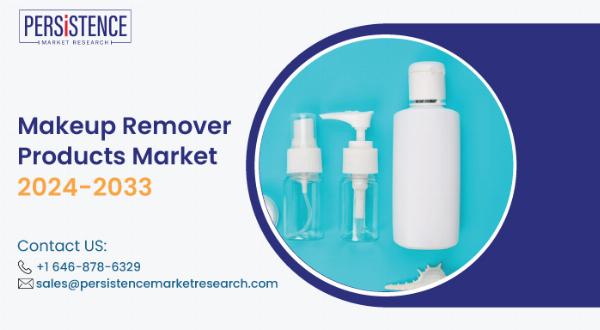What is the market study for makeup remover products?

Strong 8k brings an ultra-HD IPTV experience to your living room and your pocket.
Market Overview
The makeup remover products market has emerged as a significant segment within the broader beauty and personal care industry, driven by increasing consumer awareness about skincare, rising usage of cosmetics, and the growing preference for natural and organic beauty products. A comprehensive market study for makeup remover products involves analyzing various factors such as market size, growth drivers, consumer behavior, competitive landscape, and future trends. This analysis helps businesses understand the market dynamics and make informed decisions to capitalize on emerging opportunities.
Market Size and Growth
The global makeup remover products market has shown consistent growth over the past few years. As of 2023, the market generated a revenue of US$ 3,179.6 Million and is projected to reach US$ 6,928.3 Million by 2033, growing at a compound annual growth rate (CAGR) of 8.1%. The growth is primarily driven by increasing consumer awareness of the importance of skincare, the rising use of makeup, and the demand for effective products that cater to different skin types and concerns.
Key Drivers of the Market
Several factors are driving the growth of the makeup remover products market:
1. Rising Awareness of Skincare
Consumers are becoming increasingly aware of the importance of removing makeup properly to maintain healthy skin. The harmful effects of leaving makeup on overnight, such as clogged pores, acne, and premature aging, have led to a greater emphasis on using effective makeup removers as part of a daily skincare routine.
2. Increased Use of Cosmetics
The growing popularity of cosmetics, particularly among younger demographics, is contributing to the demand for makeup removers. As more people incorporate makeup into their daily routines, the need for products that can effectively and gently remove makeup without damaging the skin has become more pronounced.
3. Shift Toward Natural and Organic Products
The global trend toward natural and organic beauty products is also influencing the makeup remover market. Consumers are increasingly seeking products made with natural ingredients, free from harsh chemicals, parabens, and synthetic fragrances. This shift has led to the development of makeup removers that not only remove makeup but also nourish the skin with organic ingredients.
4. E-commerce Expansion
The rise of e-commerce has made it easier for consumers to access a wide range of makeup remover products. Online platforms offer convenience, product variety, and the ability to compare different brands and formulations. The direct-to-consumer (DTC) model has also gained traction, allowing brands to build closer relationships with customers and offer personalized products.
Consumer Behavior and Preferences
Understanding consumer behavior is crucial for analyzing the makeup remover products market. Key consumer preferences that influence purchasing decisions include:
Effectiveness: Consumers prioritize products that effectively remove all traces of makeup, including waterproof and long-lasting formulas, without irritating the skin.
Skin Compatibility: Products that are suitable for sensitive skin, hypoallergenic, and free from common irritants are in high demand.
Sustainability: There is a growing preference for eco-friendly and cruelty-free products, with recyclable or biodegradable packaging.
Convenience: Products that offer convenience, such as makeup remover wipes and micellar waters, are popular among busy consumers who seek quick and easy solutions.
Competitive Landscape
The makeup remover products market is highly competitive, with both global giants and emerging players vying for market share. Key players include:
L’Oréal S.A.: A leader in the beauty industry, offering a wide range of makeup removers under various brands like Garnier and Lancôme.
Unilever: Known for its Simple and Dove brands, Unilever focuses on skin-friendly formulations and sustainability.
Estée Lauder Companies Inc.: A major player in the premium segment, offering luxury makeup removers through brands like Clinique and Bobbi Brown.
Procter & Gamble (P&G): Through its Olay brand, P&G offers a range of affordable and effective makeup removers.
Johnson & Johnson: The Neutrogena brand is well-known for its dermatologist-tested makeup removers, popular among consumers with sensitive skin.
Regional Analysis
The makeup remover products market is global, with varying growth rates across different regions:
North America: North America is a leading market, driven by high consumer awareness, the popularity of makeup, and the demand for premium skincare products.
Europe: Europe is a mature market with strong demand for natural and organic products, particularly in countries like Germany, France, and the UK.
Asia-Pacific: The Asia-Pacific region is expected to witness significant growth, fueled by rising disposable incomes, increased makeup usage, and growing skincare awareness in countries like China, Japan, and South Korea.
Latin America and Middle East & Africa: These regions are also experiencing growth, driven by urbanization and the increasing adoption of beauty and personal care products.
Future Trends and Opportunities
Several trends are expected to shape the future of the makeup remover products market:
Innovation in Formulations: Continued innovation in product formulations, such as the development of multifunctional products that cleanse, hydrate, and tone the skin, will drive market growth.
Sustainable Practices: Brands that prioritize sustainability in their product offerings and business practices are likely to resonate more with consumers, leading to increased market share.
Personalization: The trend toward personalized skincare solutions will create opportunities for brands to offer tailored makeup removers that meet individual consumer needs.
Conclusion
The makeup remover products market is poised for robust growth, driven by increasing consumer awareness, rising use of cosmetics, and the demand for natural and sustainable products. As brands continue to innovate and adapt to changing consumer preferences, the market is expected to see significant expansion over the next decade.
Understanding the key drivers, consumer behavior, competitive landscape, and future trends will be crucial for businesses looking to capitalize on the opportunities in this dynamic and evolving market.
Note: IndiBlogHub features both user-submitted and editorial content. We do not verify third-party contributions. Read our Disclaimer and Privacy Policyfor details.


